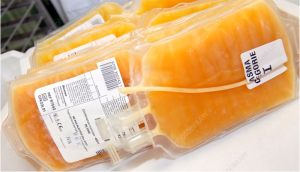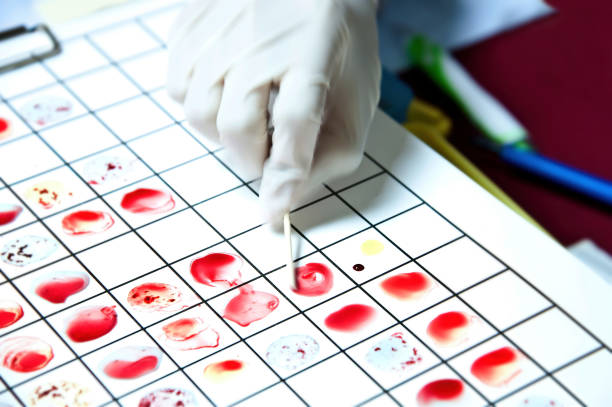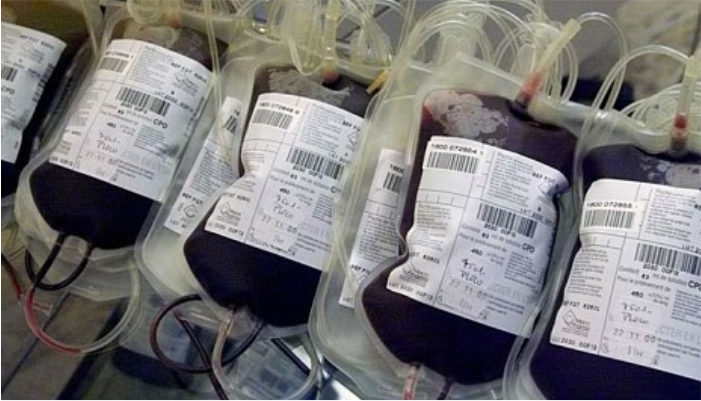Fresh Frozen Plasma (FFP): Indications, Preparation, Administration & Limitations

Synonyms:
FFP, Plasma Fresh Frozen, SDFP
Test Commonly Includes
ABO blood typing is essential prior to transfusion. FFP is obtained by separating plasma from a whole blood unit within six hours of collection and freezing it quickly. Each unit typically contains 150–275 mL of plasma with all coagulation factors except platelets. FFP is not concentrated and cannot fully correct severe coagulopathies. Excessive use may lead to fluid overload.
Patient Care and Preparation
- ABO compatibility is essential; Rh factor is not considered.
- Crossmatching is not required.
- Administer through a blood filter.
- Each unit contains:
- ~250–400 mg of fibrinogen
- ~200–250 units of Factor VIII
- Also includes Factors IX, V, VII, X, XI, XIII
- Raises plasma fibrinogen by ~10–13 mg/dL — cryoprecipitate is more effective if higher fibrinogen is needed.
- Dosage: Approx. 10 mL/kg; rate: 10 mL/minute
Specimen and Container
- Specimen: Whole blood
- Container: Red top tube
Storage Instructions
FFP must be frozen at -18°C or below and has a shelf life of 1 year. Inspect the frozen bag for cracks, especially at seams. To thaw, use a 37°C water bath with agitation for 15–30 minutes (depending on volume). After thawing, store at 1°C–6°C and use within 24 hours. Ideally transfuse within 2 hours to preserve labile factors. FFP is typically not reissued once thawed.
Special Instructions
Available on demand. Thawing time is generally 15–30 minutes. FFP should be transfused shortly after thawing, especially when labile coagulation factors are needed.
Use
- Replacement for labile and stable coagulation factor deficiencies
- Source of fibrinogen, factors V, VII, IX, X, XI, XIII
- Not suitable for prophylactic use in dilutional coagulopathy
- Used in:
- Severe liver disease
- Vitamin K deficiency bleeding
- Warfarin (Coumadin) overdose (combined with vitamin K)
- Plasma exchange in TTP or HUS
Limitations
- Risk of circulatory overload
- Frequently overused without clear indication
Contraindications
- Not recommended if PT/aPTT is < 1.5× normal and there is no active bleeding
- More specific therapies should be used when available (e.g., cryoprecipitate, AHF)
- Not first-line for hemophilia or von Willebrand’s disease
Additional Information
- Contains anti-A or anti-B antibodies (ABO compatible matching is essential)
- Despite being cell-free, may contain antigens → allergic reactions possible
- Risk of fever, anaphylaxis (especially in IgA-deficient individuals)
- Immunization to plasma proteins or red cell fragments can occur
- Plasma volume overload and disease transmission are rare but possible
References
- Barnette RE, Fish DJ, Eisenstaedt RS. “Modification of Fresh-Frozen Plasma Transfusion Practices Through Educational Intervention.” Transfusion. 1990; 30(3):253-7.
- Coffin C, Matz K, Rich E. “Algorithms for Evaluating Appropriateness of Blood Transfusion.” Transfusion. 1989; 29(4):298-303.
- Circular of Information, American Red Cross, AABB, Council of Community Blood Centers, 1992.
- Jacobs et al. “Laboratory Test Handbook.” Lexi-Comp Inc, 1994.


